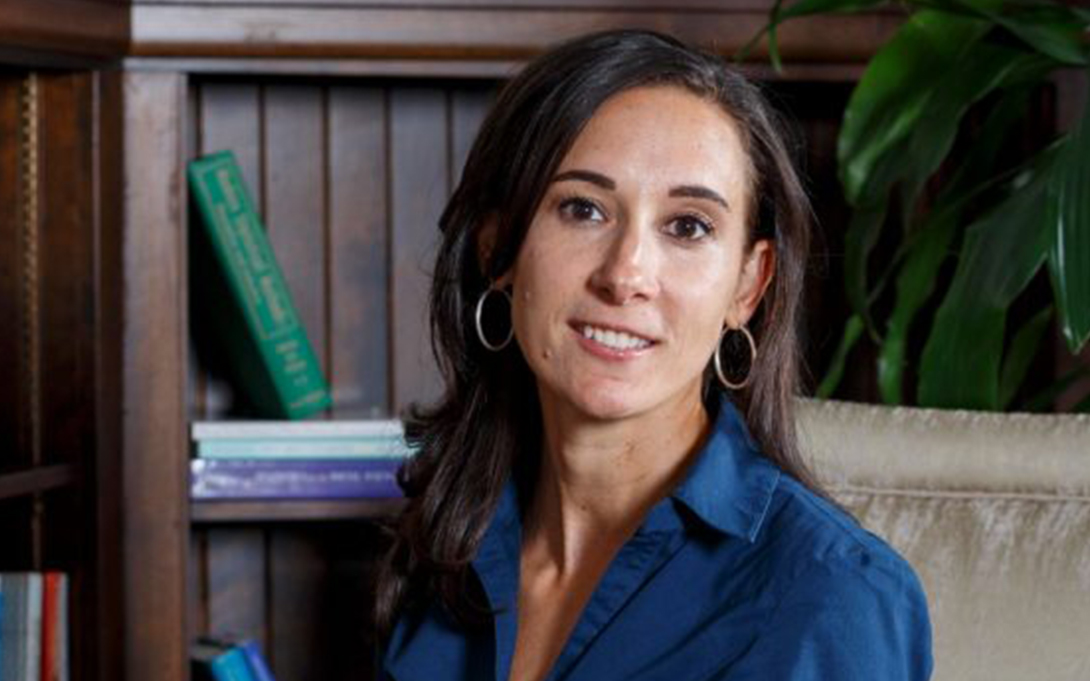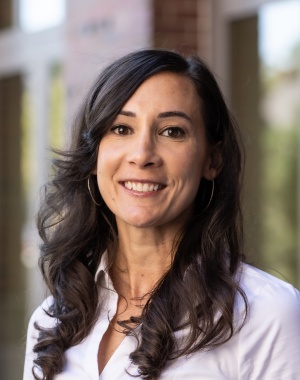
Mara Ostfeld recently joined the Ford School of Public Policy as faculty by courtesy, adding to her faculty roles at the Center for Political Studies at the Institute for Social Research and at LSA Political Science. It is a return to the Ford School for Ostfeld, who was a postdoctoral fellow at Weill Hall in 2016. Her research focuses on the relationship between race, media, and political attitudes. As the 2020 elections unfold, look for her commentary as an analyst on NBC and Telemundo.
Ford School: Welcome back to the Ford School! What are you working on these days?
I am completing a book (with Nicole Yadon of Ohio State) exploring the many ways in which skin color - within and across racial categories - can shape, and even be shaped by, one's political views. There is a robust relationship between one's skin color (again, within and across racial categories) and one's access to opportunities and experiences with discrimination. African-Americans, Latinx individuals and even Whites with darker skin have less wealth, lower incomes, poorer health outcomes, less access to formal education, and receive more severe sentences in the criminal justice system, than individuals who identify with the same racial category but have comparatively lighter skin. What we haven't known, however, is how the association between skin color and life experiences affects one's political views. Do people recognize these skin color disparities in their racial identity group? And does it result in meaningful variation on political views within racial categories? Equally important, do the social and political associations with skin color shape how people think about and estimate the color of their skin. We find support for both of these points - people's political views are both shaped by their skin color and the way people report the color of their skin is shaped by their political views. This suggests that the polarization in American politics that has been powerfully shaped by the divisions between members of different racial categories may very likely be replaced by a system of political polarization shaped by skin color.
In a separate project (with Guadalupe Madrigal), I am exploring how Latinx voters perceive candidates who speak Spanish in their outreach. Finally, I am also working with Sara Morell and Lauren Hahn) to explore why so many women oppose policies intended to protect their civil rights (e.g. sexual harassment policies, contraceptive access, equal pay).
Ford School: What courses do you enjoy teaching?
I love teaching a community-based learning course on the psychology behind electoral turnout (POLSCI 389). Students have a lot of agency to be creative and propose their own ideas for how to increase electoral participation in a given community (based on empirical evidence, of course). Once their proposal is approved, students work in groups to refine and administer their proposal in a given community prior to election day. At the end of the course, students are able to compare voter turnout in the precincts they targeted to that of past years and that in comparable neighboring precincts, so they can evaluate the effectiveness of their outreach. It's rewarding to see U-M students have the opportunity to develop and test their own proposal for how to increase electoral engagement. It is also very meaningful to be able to help amplify the voices of residents in neighboring communities.
Ford School: What are you reading right now?
I am currently reading an amazing book of poetry called Questions for Ada by Ijeoma Umebinyuo, as well as a book that explores American attitudes toward Muslims, and the devastating social and political consequences of these attitudes. It is called Outsiders at Home: The Politics of American Islamophobia by Nazita Lajevardi.
